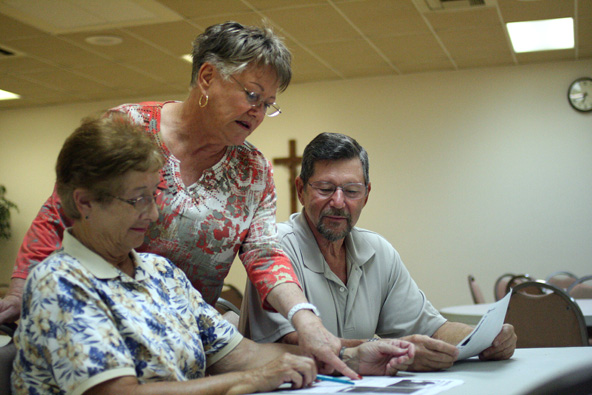
In a new report, the Diocese of Phoenix illustrates the steps it has taken in its commitment to protect minors and to reach out to victims of clergy sexual abuse.
The report, “Promise to Protect, Pledge to Heal,” marks the 10th anniversary since the “Charter for the Protection of Children and Young People” and highlights the local Church’s efforts in training, prevention and outreach to those abused.
Download: “Promise to Protect, Pledge to Heal”
The charter was part of the U.S. bishops’ response to the clergy abuse scandal that was a major concern when they met in Dallas 10 years ago.
The report is separated into four sections: healing and reconciliation with victims and survivors of sexual abuse; responding to allegations of sexual abuse; ensuring the accountability of the procedures in place in the Diocese of Phoenix; and protecting the faithful in the future.
“This report is an important milestone in our commitment and service,” reads an introductory letter from Bishop Thomas J. Olmsted. “It is 10 years this fall since the Diocese of Phoenix began this implementation of the charter. Now is a time for us as a Church to look back at what we have learned, to again remember in prayer those who have been abused and to recommit ourselves to vigilance in our Catholic community to protect our children from the evils of abuse, wherever it may occur.”
Priests, deacons, employees, educators and volunteers make up the nearly 18,500 people who were trained between July 1, 2010, and June 30, 2011, the latest audited figures available reveal in the report. More than 2.2 million people received similar training in dioceses throughout the United States.
“The process of protecting Catholics has definitely gotten better since the charter was implemented,” said Melanie Takinen, director of Safe Environment Training for the Diocese of Phoenix. In 2003, training became mandatory for all clergy, employees and volunteers. The Diocese of Phoenix also requires training for students enrolled in a Catholic school or a parish religious education program. About 34,000 minors received this training last year.
The Safe Environment Training program was developed further in 2006, the same year the Diocese of Phoenix revised its “Policy and Procedures for the Protection of Minors.” Among other things, the document gives direction to reporting suspected or alleged abuse of minors. It is reviewed annually and updated when needed, according to the report.
In June, the chairman of the National Review Board told the U.S. bishops at their spring meeting that transparency remains a crucial component of building and maintaining credibility among the Catholic faithful as well as the general public, according to Catholic News Service.
Al J. Notzon III noted at the June 13 meeting with the U.S. bishops that all 195 U.S. dioceses and eparchies have victim assistance coordinators whereas in 2002 when the abuse scandal came to light, only about 25 dioceses and eparchies had someone in place to work with victims.
Since the charter was adopted, nearly all dioceses and eparchies have undergone an annual audit by private agencies hired by the USCCB to determine how well they comply with the 17 areas of the document. The compliance rate has increased steadily over the last decade, Notzon said.
The Diocese of Phoenix has been audited annually since 2003, according to the report, and has been found to be in full compliance with the charter each year.
A primary message of the Phoenix Diocese’s Safe Environment Training program is emphasizing the need for Catholics to be vigilant of warning signs in potential perpetrators and teaches how to protect children and youth from abuse, said Takinen, who holds a master’s degree in psychology and has experience in youth ministry. The training also addresses keeping individuals safe from vulnerable situations.
“As adults serving in a parish or school, it’s important to learn how we can protect ourselves from vulnerable situations,” Takinen said. “The training also covers boundary violations and what adults can do to avoid putting themselves in a potentially compromising situation.”
The training puts the responsibility of watching out for children and youth into as many hands as possible in order to protect anyone in the Catholic community from abuse, Takinen said.
Children and adults learn about healthy and safe ways to engage each other by addressing appropriate boundaries on touching and limits on conversation. When the dialogue becomes too personal, it can lead to boundary violations and inappropriate relationships, Takinen said.
“Initially I think this was a challenge for most people, especially those who have been Catholic for a very long time,” Takinen said. “However, once people learn how these seemingly innocent behaviors can lead to inappropriate ones, they begin to understand why the rules are there. The reality is we are living in a completely different world in the Catholic Church than we were 20 years ago. Now it is about finding that balance between healthy relationships and being pastoral to those we serve.”
—
Catholic News Service contributed to this story.






